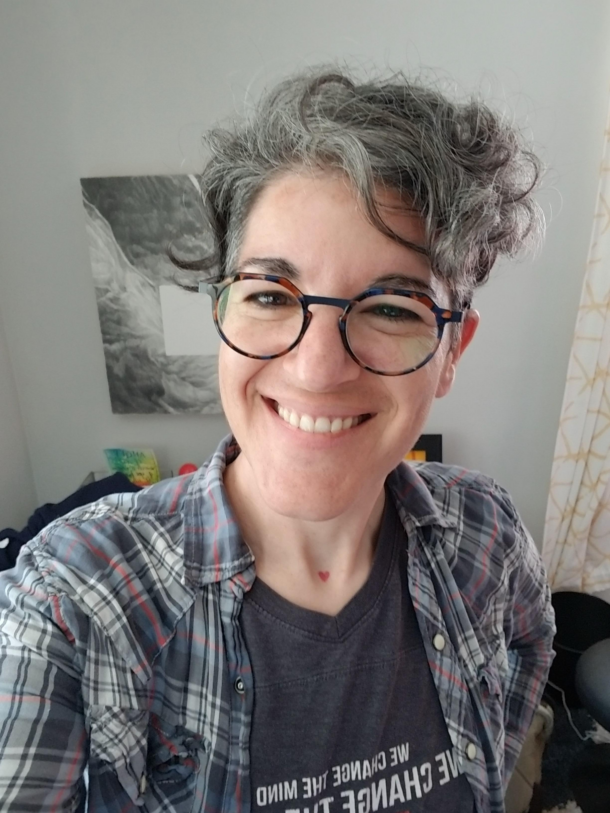I remember the first time I met Rachel Winstead (she/they) in person. I was sitting in this wonderful (though now-defunct, sadly) coffee shop inside an even more wonderful art museum in Roanoke (truly, for a city our size, it’s quite a gift of an art space). The outdoor walls were all glass and the tables were chrome which made for a space that was modern and inviting and so very bright.
Rachel had reached out to me on LinkedIn in advance of a move to Roanoke; the person I met was even more wonderful than the person I had been messaging with. Smart, curious, and so very, very warm. It didn’t take long for our conversations to stray beyond the boundaries of the traditionally professional and into our whole selves, and for coffee chats to turn into strolls and potlucks and friendship.
Though their professional titles were about freelance writing with a marketing focus, what Rachel is really about is growth – her own and that of the community around her.
These days, she’s taking her work as an educator into a more traditional space: a high school classroom. There, their classes are ostensibly about literature and writing but, really, Rachel is teaching creative expression, whatever that means to each student.
That’s largely what we explored in our All Up in It conversation: What Rachel is learning about teaching creative expression in a context where grammar is laden with Anglo-centric biases, students might be experiencing housing insecurity, and Rachel is adjusting to working with 140 students after many years of working solo as a freelancer.
The preview is on top for a couple of minutes of sneak peek – but I really hope you’ll gift yourself 35ish minutes of inspiration and watch the whole conversation below!
(Show notes below that!)
Show Notes
- Rachel (she/they) describes themself as a teacher of teenagers which feels like being a partner in the students’ creative journey – and a tired human, recovering from being in that intensive energy after having been a solo freelancer for many years
- They have been thinking about how we help each other tell our stories, stay curious, and discuss new or conflicting ideas
- They’ve also been deepening their exploration of boundaries in the context of the high school
- We discussed the intersection of losing our childhood ease with creativity as we buy into the story of what being good at creating means to our creative process – plus what Rachel is seeing in terms of creative potential in their students
- If Rachel had their druthers, they’d call all of their classes Creative Expression because their priority is for each student to figure out what creative expression looks like to them as an individual
- We also discussed the intersection of “proper” English, colloquial English, and a focus on form over function (or communication over grammar)
- How Rachel made an effort to start their class semesters with references to demonstrate the great big space available for the students to express themselves as a foundation to their efforts to create safe spaces for their voices
- Students experiencing homelessness or housing insecurity is part of the landscape Rachel is navigating as they create space and measure expectations of the students
- Rachel likes to think of themself as a partner in their education and that though they use the language of “teacher” in their school, Rachel prefers the title of “educator” which is something they’ve been for a long time as a professional writer
- Tools Rachel uses as they traverse this learning curve include their gut, self-care by way of breathing and tuning into their body, empathy, listening, school resources, and perpetually experimenting to find out what works for them
Rachel spotlighted Youth on Their Own, a dropout prevention program that supports the high school graduation and continued success of youth experiencing homelessness in Pima County. Learn more at https://yoto.org/
I also mentioned that Rachel has interviewed me on her podcast, The Creative Doula Sessions!
Part 1 [CURIOSITY]: The practice of “gritty determined stubborn love”
Part 2 [CURIOSITY]: A creative approach to empathy
Part 3 [CURIOSITY]: Transforming our discomfort through the practice of curiosity
